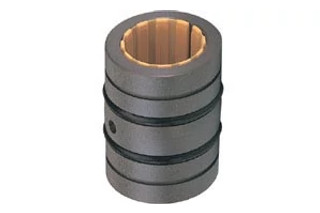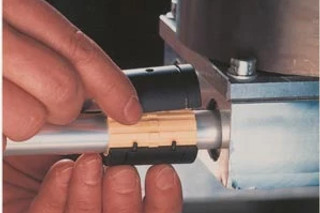Change Language :

Installment 4: The True Cost of Linear Bearing Lubrication

drylin® R linear bearings do not rely on ball bearings and are completely lubrication-free. They can directly replace linear ball bushings.
Last year I was studying the true costs of lubrication in bearing systems. Since we manufacture oil and maintenance-free plastic bearings, it's not hard to understand my agenda in doing this, but even I was surprised.
Over and over again the main reasons cited as the causes of bearing failures were lubrication-related issues. In fact, one major ball-bearing manufacturer completed a study claiming 54% of all bearings failed due to lubrication issues, while another one said this percentage was closer to 80%.
Yet many companies I visit do not feel the up-front cost savings of drylin® linear bearings versus other bearings - which can be between 25-50% - justify the re-design.
However, I would challenge you to consider the other costs associated with ball bearings: for example, how much cost is incurred due to machine downtime? How much does it cost a plant to lubricate bearing points? How much do all the grease lines, fittings and lubrication systems actually add to the overall cost of a bearing system?

drylin® R linear bearings have a replaceable, lubrication-free plastic liner
As stated, 54%-80% of ball bearings fail either due to improper maintenance or contamination of the lubrication system; often leading to machine shutdowns, or damage to motors and other parts of the system. Many companies use the figure of $500 per hour (ref: Lean Maintenance for Lean Manufacturing by Howard C. Cooper) to determine the costs of this downtime. Some use numbers that are much higher.
How much does it cost to actually lubricate a ball bearing?
One major oil company estimates that it takes 3 minutes* to properly lubricate one grease point on a machine and that, if you have 20 grease points each requiring daily maintenance, you will pay $7,300 per year to maintain that machine (ref: Lubrication Automation website). This is equivalent to $365 per bearing, using $20 per hour for overheads; a number many managers may argue is too low. Imagine the costs savings if you have several machines on one production line. You could save some serious cash - and earn some serious praise from your boss at the same time.
*If you think 3 minutes sounds like a long time, the article 'Grease Guns - Learning the Basics' courtesy of Machinery Lubrication magazine helps put this into perspective.
Additional Links
What about the cost of ancillary parts required for some ball-bearing applications - such as oil zerks and lines (including the special machining required to install these on your machine) oil reservoirs, scrapers, wipes, seals, central-lubrication systems? All of this adds up to extra purchase orders and lead times. One customer I visited in the packaging industry told me they add $125 per bearing for a centralized-lubrication system.
drylin® linear bearings require none of these components to function properly. They function using a high-performance, self-lubricating polymer liner in place of ball bearings and maintain a constant coefficient of friction: drylin® can move just as smoothly on cycle 1,000 as it can on cycle 1,000,0000 - without requiring any maintenance.
As always, I'm interested in hearing your thoughts on this subject - especially if you think we may be able to help you reduce maintenance on your machine. E-mail Matt at mmowry@igus.com.
Useful Links and Tools